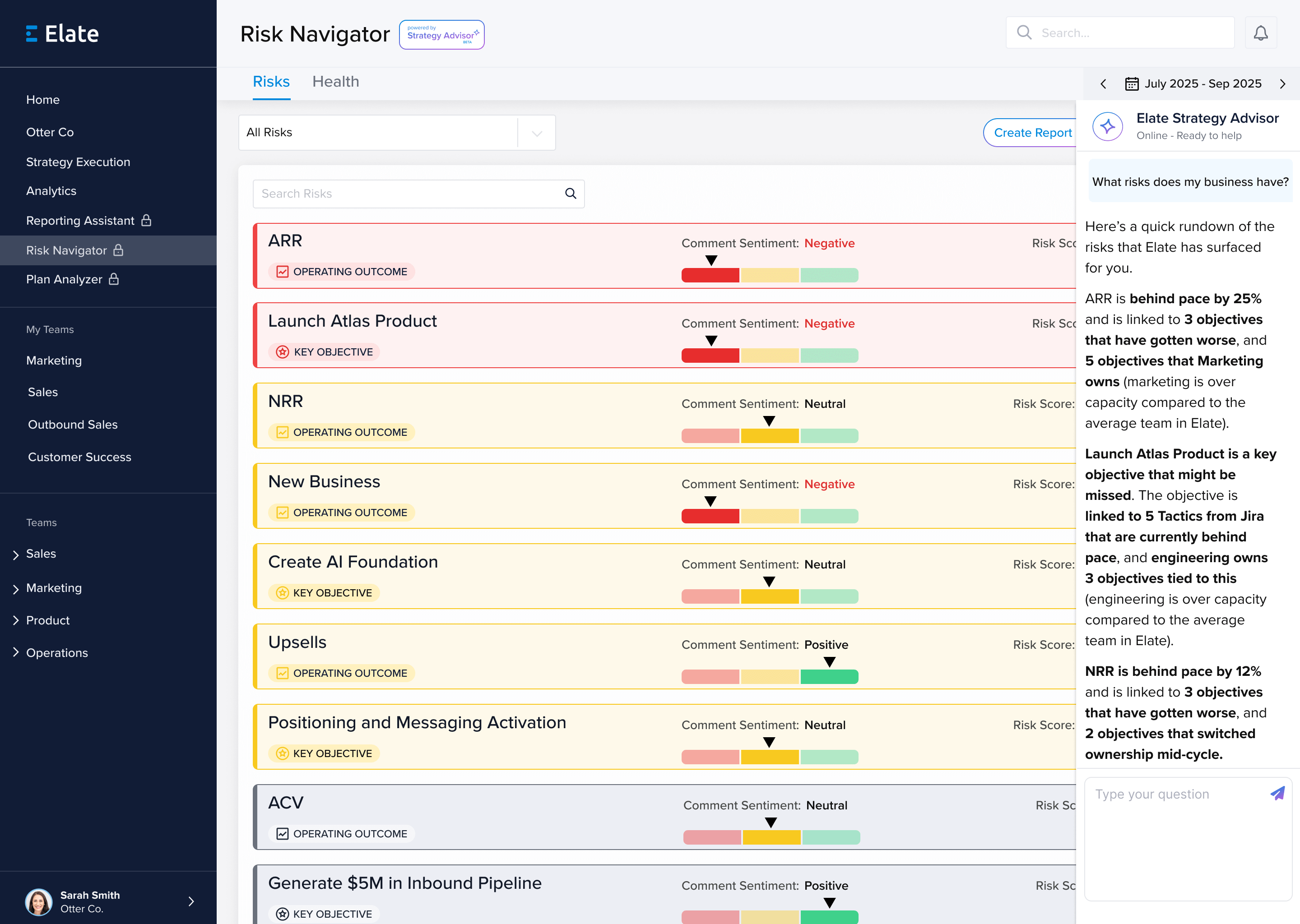Today, businesses and their employees are exposed to a great deal of data on a regular basis, so it is crucial for them to know how to cut through it all in order to focus on what is truly important. This is where objectives and key results, or OKRs, come into play. By focusing on OKRs, managers and other business leaders will be able to extract the most important insights from various datasets, and thus, make decisions that will impact their reputations, growth, and scalability moving forward.
When it comes to objectives and key results, though, there are a few OKR best practices that all savvy businesses should keep in mind. First, it is important to make sure that everyone within the business buys into the process, so that they will have the best chance of success. Companies also need to make sure that they solicit plenty of feedback from their managers and employees, so that they are soliciting buy-in from the start.
Second, it is important to start small and go slowly. At first, there will be a lot of information that people want to focus on, but the reality is that this might very well be too much to handle. There’s no shame in this—it happens to many companies!—but it might also be best to start out with a small number of goals and clearly-defined objectives. Businesses should also make sure that each objective is always paired with a key result. In doing so, every employee can be sure they understand what they are paying attention to and why.
Next, it is also important for businesses to make sure that they are transparent when it comes to their OKRs. There should not be any surprises for employees or managers, and businesses also should not change their OKRs midstream, as this can cause confusion.
Finally, it is also important for businesses to make sure they have a clearly defined schedule to help them record everything. For instance, there should be a calendar that tracks all relevant timelines, and this should include set dates upon which each OKR is to be evaluated. Business leaders should also ensure that everyone has input when it comes to what the company should do in response to these results.
How To Write OKRs
When it comes to objectives and key results, it is also important for everyone within the company to understand how these are developed and why. For those who are wondering how to write OKRs or how to set OKRs, too, there are a few key points to keep in mind.
First, keep in mind that the “O” part (objectives) and the “KR” part (key results) of OKR are different. Objectives are goals that the company intends to accomplish, while key results are measurable milestones toward those objectives as defined within a set period of time.
The first step that companies will need to follow is to identify the objectives that matter most to them. They should then take a look at the objectives most closely tied to the success of the department or company. These are the goals that should probably be targeted.
The next step is for companies to figure out which key results are most closely tied to the objectives they have just identified. When setting out their objectives and key results, too, companies should also keep in mind that these key results will need to be accomplished within a set amount of time. Business leaders will need to figure out what timetables are most appropriate and then stick to them. Furthermore, they should remember that all key results will need to be measured. Figuring out which metrics are going to be the most important when it comes to defining results and objectives will be critical.
Implementing OKRs
Once the objectives and key results are written out, then it is time to implement them. For this part, it is often helpful to refer to an OKR implementation guide for assistance. When it comes to instituting OKRs, it is important to keep in mind that there should not be any surprises to those who will be working with them moving forward.
When implementing OKRs, then, business leaders should remember to keep everyone in the loop. Everyone in the company should have a voice when it comes to writing OKRs, so that they will understand why, when, and how these are being instituted.
It is also helpful to refer to OKRs for business intelligence. This can go a long way toward making objectives and key results more visible within a company. The more attention that people pay to their OKRs, the more likely that they are to hit them. Even though OKRs should not distract business leaders or employees from their daily operations, these OKRs should be at the core of everything they do over the course of the day.
Finally, business leaders should also remember to revisit OKRs on a regular basis. The only way these OKRs will be helpful is if they are referenced regularly. Business leaders should talk to managers and figure out when it would be appropriate to take a look at how everyone is doing with their OKRs. That way, there is always clarity when it comes to these items.
OKR Examples
When it comes to objectives and key results, it is always helpful to refer to OKR examples. For instance, there are many OKR examples for growth and OKR examples for customer service available. For example, the customer service department might want to shoot for improved customer satisfaction scores, and in this case, it would be important to list the targeted customer satisfaction score as a key result.
There are also OKR examples for software engineers and OKR examples for information technology. For example, one of the key objectives in these departments might be to improve the longevity of the company's equipment, while one of the key results might include making sure that all maintenance tasks are completed on time across devices. In this case, it would be important to revisit the maintenance schedule at the next reporting date.
There are also OKR examples for operations as well as OKR examples for personal growth. This is because not all growth or improvement needs to be closely tied to specific business metrics. When it comes to personal growth, for example, it might be a good idea to see a certain percentage of employees use all of their vacation time, as this is important for health, wellness, and continued productivity. It might also be helpful to use employee satisfaction as a key result.
These are just a few of the largest and most relevant examples of OKRs that companies might want to target.
OKR Tracking
When it comes to objectives and key results, it is also critical to focus on OKR reporting. The reporting schedule should fit the lifecycle of the business, and can often be achieved using . an OKR reporting template. This template should contain information such as the objective, the result, the department, the people involved, and when it is to be revisited.
When it comes to OKR tracking, a good schedule is usually quarterly, so business leaders can start off this process by figuring out when the next quarterly report is due. They can then come and make sure that both employees and managers understand how the OKR will be reviewed at that time. Then when it comes to the reporting process, business leaders should make sure there is a clear definition of what success will look like. This way, employees and managers will know if they are on the right track.
For example, there might be goals laid out next to the key result on the OKR template, so that people realize this will be part of the OKR tracking. In this way, it will become clear to everyone that there is a target the department can shoot for over the next few months.
OKR Template
As mentioned briefly above, when it comes to generating OKRs, it is often a good idea to use a template. There are several advantages to using an OKR template. For instance, those who are generating objectives and key results for the first time might find it helpful to have examples, which a template can do by providing a framework. At the same time, though, this framework might feel predictable, which is one of the biggest downsides of using a template.
However, a great deal of helpful information can also be included in this template, such as cascading key results, the owner of the objective, and the performance metrics that will determine its success. Furthermore, the template might even list quarterly targets for each of the first, second, third, and fourth quarters. In this way, everyone will be clear regarding what is being tracked and how success will be measured.
At the same time, in order for companies to make sure that employees are shooting for these targets, it is important to hold OKR training too. OKR training is key because it helps everyone to formulate objectives, determine key results, and figure out how they will be able to best meet those targets.
OKR vs KPI
Savvy business leaders should also be aware of the ways in which they can compare OKR vs KPI.
When it comes to KPIs, these are isolated metrics that exist within a larger framework. By contrast, OKR is a strategic framework itself, with every objective tied to targeted results. In some ways, OKRs are more black and white than KPIs.
It is important for everyone to understand how to use OKRs, though, since product OKRs can be incredibly helpful for making sure that everyone within the business stays on track when it comes to their business goals and metrics.
OKR Methodology
When it comes to using an OKR guide, it is important to understand why OKRs have become so popular. As mentioned previously, there is a lot of data available today and both businesses and individuals can easily get overwhelmed. The OKR methodology is designed to help prevent information overload, particularly when it comes to business growth.
More specifically, the goal of OKR is to provide employees and business professionals with something concrete they can focus on. The most important thing that everyone should remember when it comes to OKRs is communication. By making sure that everyone is on the same page, nobody will be surprised, and everyone will buy into the methodology, leading to a greater chance of success. When used appropriately, OKRs can make a significant difference in a business’s success.











